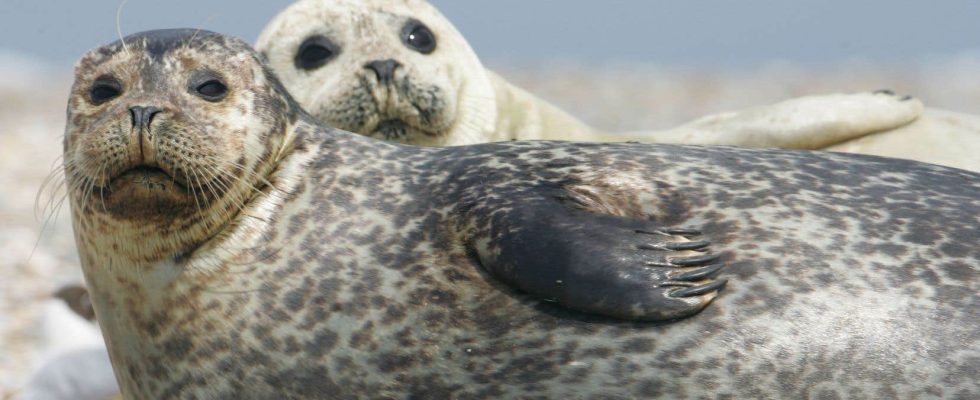The intention to modify the boundaries of the Île-Brion ecological reserve to allow seal hunting is a gesture with serious consequences, and highly revealing of the importance given to environmental protection by the government of Quebec. Typically, granting a legal and permanent protective status to a territory (national park, ecological or biodiversity reserve, etc.) takes decades. The process of creating a protected area is long, expensive, and it is a long-term decision, for future generations.
All these territories contain natural resources which, if taken for commercial purposes, could generate economic development and jobs. When it comes to protecting them, the government makes two major, interrelated decisions. On the one hand, it decides that these territories will have the vocation of permanent protection of Quebec’s natural heritage, for the benefit of future generations. On the other hand, in line with the previous decision, it also decides that economic sectors based on the extraction of natural resources will not be able to source their supplies from these protected areas and will have to do so elsewhere on our immense territory.
In this regard, the case of the Île-Brion ecological reserve, near the Magdalen Islands, deserves our full attention. In this matter, the current government is contravening decisions made by another government and is creating a precedent that will have repercussions on the entire network of protected areas in Quebec.
Most of Quebec’s protected areas are far from being “glass bells” where no one can enter. Only the status of ecological reserve can correspond to this image, i.e. less than 75 small territories, covering 0.77% of the total surface area of our protected areas. On this tiny fraction of our territory, we seek to preserve biodiversity in its natural state, as completely and permanently as possible. This is why it is generally not permitted to enter these territories and, where applicable, the impact of authorized activities (scientific or educational) on biodiversity must be zero or negligible. To do this, both the Law on ecological reserves, adopted in 1974, and the Law on the conservation of natural heritage (LCPN), adopted in 2002, specified the following rule: hunting, trapping, fishing, earthworks or construction, agricultural, industrial or commercial activities as well as, generally, any activity likely to modify the state or appearance of ecosystems.
However, during the winter of 2020-2021, Minister Benoit Charette authorized hunting in the Île-Brion ecological reserve, despite this rule. Then, in March 2021, he removed this rule from the LCPN, in a maneuver similar to the one that recently allowed Northvolt to avoid a full environmental assessment. However, any collection of plants or animals, especially if it is for commercial purposes, remains clearly inappropriate, and must be prohibited in this type of protected area.
By authorizing this hunt, the minister acted against the decision taken by the government which created this protected area, prohibiting the taking of resources for commercial purposes. From now on, nothing prevents the responsible minister, or one of his successors, from authorizing the removal of other resources of commercial value (e.g. wood) in other ecological reserves under the cover of scientific observation.
In any protected area, fires, strong population growth of a species (such as an insect epidemic), fungal diseases, unusual climatic phenomena (tornadoes, floods, etc.) are all intrinsic components of ecosystem functioning. The strong growth in gray seal populations on Brion Island is a completely natural phenomenon, resulting from the presence of a favorable habitat for this species in the ecological reserve and the state of its populations in the Gulf of St. Lawrence .
The creation of the Île-Brion ecological reserve in 1974 aimed to protect all species present on the island, including the gray seal, an intrinsic component of the riparian ecosystems. Just like any other species present on the island, the gray seal interacts with the biotic (other species) and abiotic (physical environment and climate) components of its habitat. This is the nature of an ecosystem. Today, the government of Quebec announces that it intends to modify its protected areas according to the requests it receives for the exploitation of the resources present.
The door is open to reducing the size of other protected areas, or even completely eliminating some of them, to create new hydroelectric reservoirs or to develop new roads or transport lines energy, new wind turbine complexes or even new mines.
If the global network of protected areas has progressed considerably in recent decades, the scientific community is greatly concerned about its sustainability and is concerned about the real level of protection applied to these territories. There have always been, and always will be, economic interests attracted by the natural resources present in protected areas. Reducing the size of a protected area to satisfy these interests is a first step down a very slippery slope. Brazil has been a state committed to this path for decades, to the detriment of one of the great biomes of global importance, the Amazon forest.
We do not know if embarking on this path is part of the Nature 2030 Plan of the Coalition Avenir Québec, but one thing is certain: if the priority of this government’s priorities remains to match the wealth of Ontario, the case from Brion Island will breed elsewhere, in profusion. What are our protected areas worth if the generations following those who established them have nothing to do with the decisions of their ancestors?
